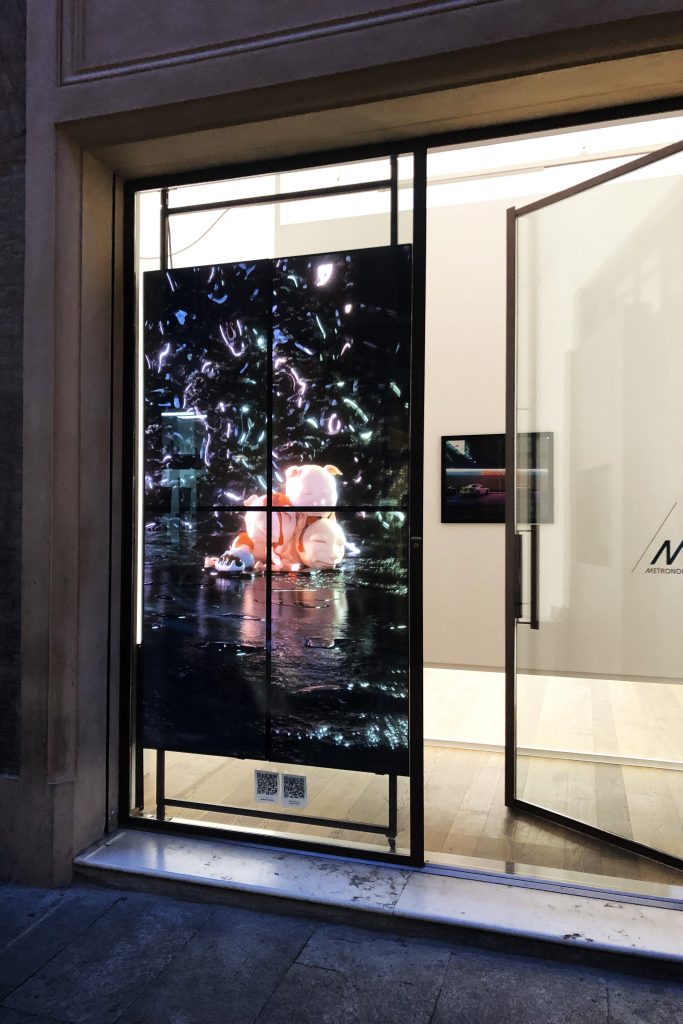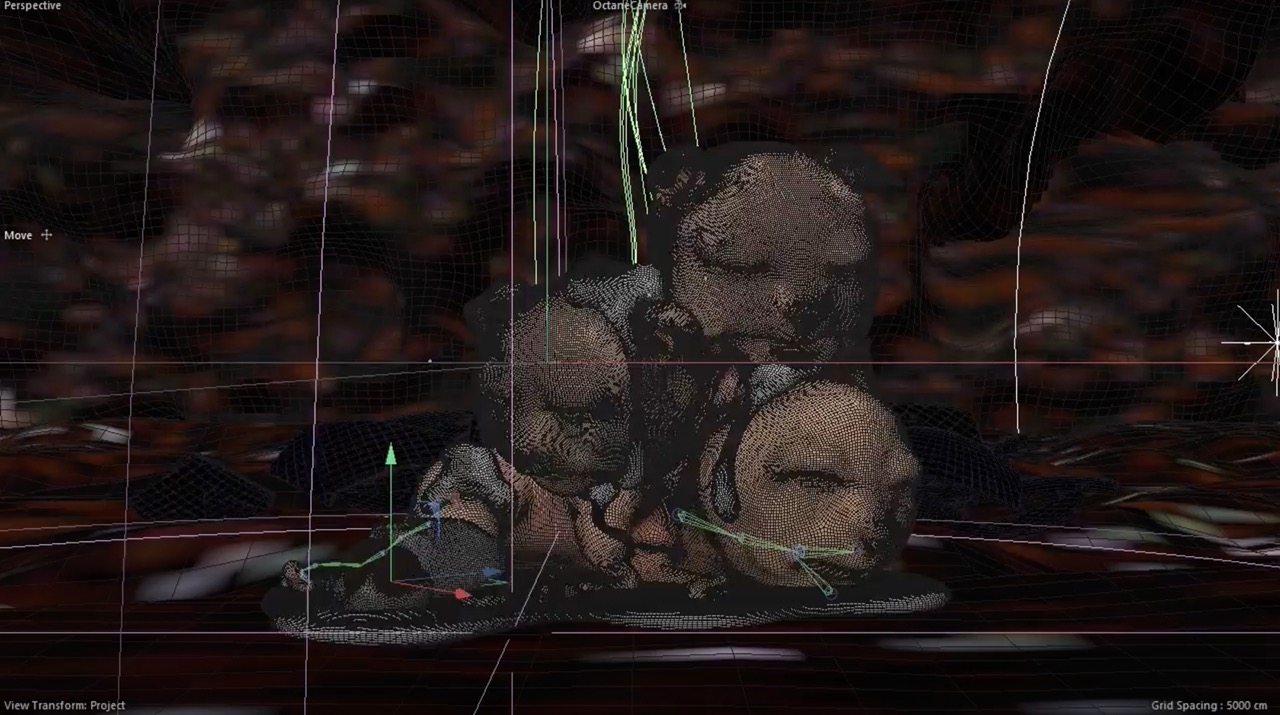MØRNING STUDIO
Generazione Critica: MØRNING STUDIO is a creative strategy studio founded by Lydia Pang and Sam Jackson that stands at the intersection of communication, technology and visual arts. How did the studio come about and what is your creative approach?
MØRNING STUDIO: Lydia and Sam met while both working together at Nike in Portland. They knew the creative industries were in crisis and during the lockdown they invited their community (industry peers, experts and beyond) to unleash on them everything that they thought was shit and not serving them, it was from this that they then decided to build something new, which took shape as MØRNING – a creative strategy studio. The studio is built on values and a belief system more than an approach. We are guided by our mission to “Be Less Shit” – this manifests itself by infiltrating the industry from within to make incremental change from the inside. Be it ethical change, creative leadership change or leading from the edges of culture. We pride ourselves on not being observers of culture but active participants, and we believe it’s a new day for creativity.
GC: How is the punk and counter-culture attitude reflected in your work? What are your sources of inspiration?
MS: We get into the belly of the beast with our clients to cause good trouble. We live true to our values and our mission which is “Be Less Shit” . It’s not about big inflated promises that we can’t keep but about incremental change. How can we be a little less shit every single day.
Our sources of inspiration come from everywhere. We have a team of people that are not cultural observers but creators. We don’t stand on the sidelines, we get amongst and live it.
GC: Ø is an experimental creative project that explores “the intricate relationship between humans and machines through the perspective of an otherworldly creative,” as you have called it. How did this project begin and what are your long-term goals for Ø?
MS: Ø is a way to grapple with how AI is shaping everything from culture and the creative industry to how we communicate and bias in tech – essentially, how it is reimagining our very humanity. True to type, it wasn’t enough for the MØRNING team to simply analyse these cultural shifts, we wanted to build a case study to test our theory.
In this first phase of the project, we are using Ø as both a vehicle for storytelling from a non-human perspective and a way to actualise a cultural value exchange between humans x machines. Our hunch is that A.I and machine learning models are actually opening up new opportunities for collaboration between creators and fans, brands and consumers, which will lead to richer and more engaged relationships— think the modern-day manifestations of fan fiction groups of the past.
We believe that without co-creation, there is no culture, only content. That’s why we partnered with a range of incredible artists already reimagining human x machine relationships. Incredible 3D designer Jae Yeon Kim, who created Ø’s character. HERVISIONS, who we collaborated with to bring Jae’s designs to life through animation, experimental social media content and the creation of a new digital home for Ø. As well as IINDYVERSE, who created our two-way chat function LIMBØ, inviting you into Ø’s world so that we can learn from each other, evolving Ø’s mission and impact together.
Our long term goal for the project is to keep experimenting with the boundaries of artificial intelligence – as we feed Ø more insights we will continue to evolve our relationship and potentially see Ø grow from a baby to a full grown interactive bot.

MØRNING STUDIO, Ø, installation view at Digital Video Wall, Metronom IT. ©
GC: As for Ø’s aesthetics, in an interview for It’s Nice That with Joey Levenson, two moodboards shows the different visual inspirations: you can glimpse a detail from Pellegrino Tibaldi’s Ulysses blinds Polyphemus fresco in Palazzo Poggi, Bologna, Giger’s alien figures that inspired the Alien movie’s Xenomorph, surrealist and symbolic beings, Patricia Piccinini’s hyperrealist sculptures, variations of a three-headed dog. Can you tell us a little bit more about what inspired the final result?
MS: We wanted Ø to be symbolic of everything which we stand for: the power of the hivemind, facing the ugly truth, and tasty contrasts (we are cute but so very gross). So much of Ø’s appearance was rooted in theory and research, from baby schema which informed the size and shape of its facial features, to the mythology of oracles within different cultures and how this could translate with our own experimentation into making our own digital version. Nothing about the way Ø looks is unintentional. Giger’s Xenomorph was a particularly poignant reference because those characters were rooted in the horrors of his dreams, which creates a beautiful dichotomy and is perfectly represented through his artwork. This is exactly how we wanted to see and use Ø: as an exploration into our horrors and dreams.
GC: How did you implement ChatGPT to create the bot and what methods did you use to train it so that it could generate consistent interactions with the user each time? What were and what continue to be the challenges in creating such an interaction system?
MS: The bot was built with our creative technology partner iiNDYVERSE who use a mix of decision tree logic and AI to power conversations. We minimise training and ensure Ø does not veer off course or hallucinate by narrowing the scope to very specific talking points or storytelling per campaign. This allows us to train Ø iteratively from each new conversation. This approach ensures that conversations or stories being told is always on brief, and does not go into any unwelcome directions.
Some key challenges are enduring guardrails are in place so the bot stays within our brand TOV and on topic. This includes ensuring LLMs (Large Language Models) are less susceptible to social hacks. Protecting IP and data privacy will also continue to be a key concern, the good news is that is already solvable using privately hosted LLMs. Finally, this is a new way of communication and we have to continue to adapt our mindset from creating one way broadcast marketing to creating interactive storytelling.
GC: Ø does not take an antithetical stance toward artificial intelligence, but rather aims to establish an equal relationship between user and machine. This approach is also expressed in Ø’s Manifesto, which has a programmatic and statement-of-intent attitude, a kind of attitude that draws on the tradition of the historical avant-gardes of the twentieth century. What gave rise to this vision of a collaborative future between man and machine? Why did you decide to formulate a Manifesto?
MS: We started the project recognising that machines are deeply embedded in our lives, altering our interactions while increasingly being made to look and act like us. Instead of blaming machines, we asked ourselves how we can reevaluate our understanding of ourselves while imagining alternative futures?
With our manifesto we wanted to share with the world not just the project but the deeper emotional pieces behind why we’re doing this. We saw fantasy as a vehicle to offer us a way to make sense of our realities, breaking the fourth wall and embracing tech — not as a means of further disconnecting from our world — but to restore, protect, and deepen our connection with it.
We wanted to treat tech as a PARTNER in our more-than-human world.
GC: Ø uses WhatsApp to interact with users randomly, without fixed times or topics. One conversation that struck me was in December 2023, in which I was asked to read an article about Taylor Swift, only to have me think later, through a series of questions, about the quality of journalistic sources. How do you see the relationship between Ø and users evolving as the level of conversation becomes more complex to reason about the role of information and data in the current media landscape?
MS: We see Ø as a companion to or perhaps even a conversational mirror to our current media & tech-infused era. The issues our three-headed friend touches on are often complex but we don’t think it is Ø’s responsibility to neatly resolve or come to emphatic conclusions about. We want Ø to raise questions about our own biases and make users think critically about the hyperreal moment we find ourselves in.
GC: Another project that reflects the multifaceted nature of the studio is Burn Book, a zine that collects ideas and trends in contemporary visual culture. How did this project come about? Why did you decide to publish a physical artifact instead of a digital product? How does it relate to the “substack” section, Burn After Reading, accessible from your website?
MS: Burn After Reading was the seed that led to the growth of the MØRNING Zine. Within all of our work we like unpacking the ugly truth, exploring tensions and breaking binaries. This is a common theme through our thinking and approach. We are experts in digital culture but we wanted to take something that can be so fleeting – an email in an inbox and reflect on that and commit that to paper to make an artifact that lived beyond and made you see the content in a new light.
GC: In addition to the Ø project and the Burn Book, do you have any other ongoing or planned ventures? If so, may we have a few details on what they are?
MS: We recently released a report called Meta Fantasy that was a thought piece that informed much of our thinking that led to the project of Ø. You can download the report through the MØRNING website. The report explores the complex relationship we now have with reality in an increasingly surreal society and how that relationship is now mediated through digital culture and technology.

